The Canyon Spectral CF 125 is the latest in a small, but hopefully growing, breed of shorter-travel trail bikes with bucket loads of attitude.
Canyon claims the Spectral 125 is built to be rowdy, with steep technical tracks, bermed corners and massive booters well within its capabilities.
While the travel numbers suggest a gently-gently approach, the geometry figures tell another story. So, how do the two combine?
Canyon Spectral 125 CF 7 frame and suspension

As the name suggests, this version of the Spectral 125 is constructed from carbon – cheaper alloy models also exist.
While it looks similar to the longer-travel Spectral bikes, the frame is its own, with tubes profiled to balance weight and stiffness, and there’s a 100g weight saving over those longer-travel bikes.
Inside the frame, there’s space for a 600ml bottle, so long as you use a side-loading cage, as well as a little tool caddy that sits under the top tube, just behind the head tube.
Frame finishing details are neat, with double-sealed bearings for extra durability, all of which are accessed from the non-driveside of the bike (other than the driveside rear-pivot bearing) to make maintenance a little bit easier. All the requisite frame-protection rubber bumpers are in place, too.
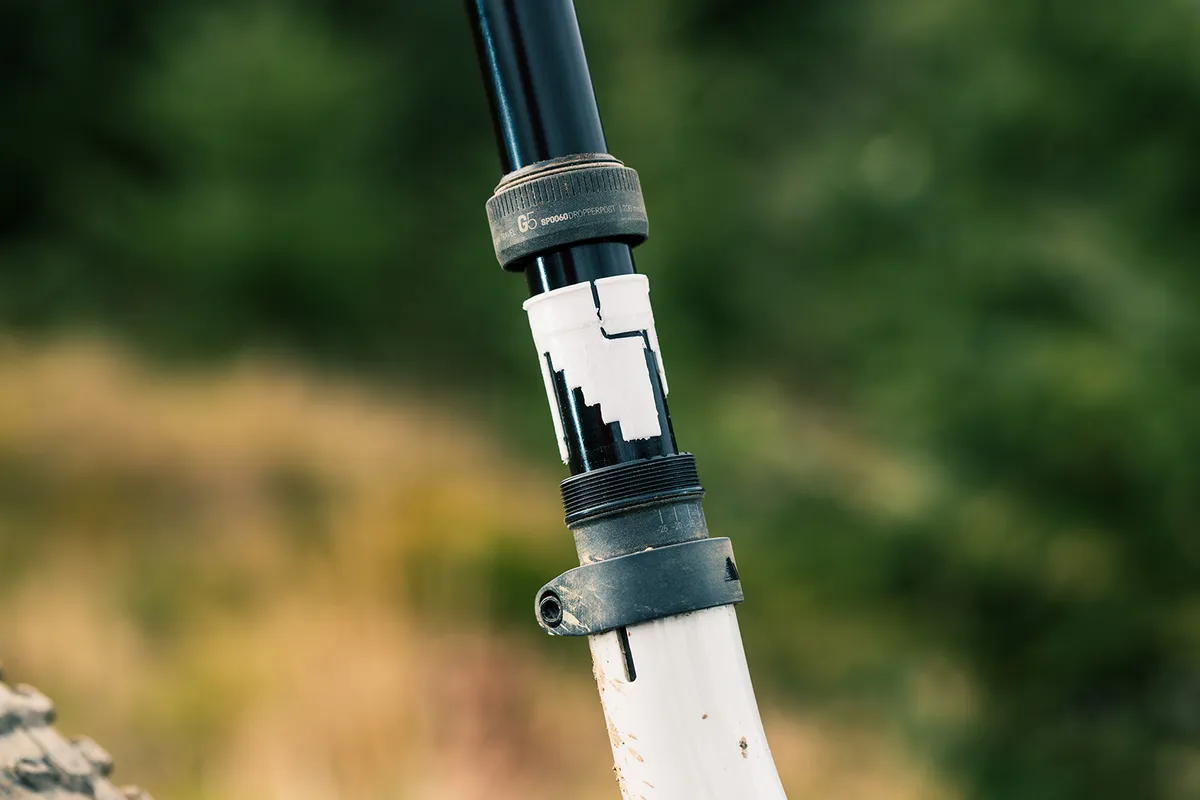
In terms of suspension, the 125mm at the back is complemented by 140mm of travel up front.
It’s controlled by a 4-bar linkage, with the characteristics of the suspension feel termed ‘Triple Phase’ by Canyon.
This effectively means they benefit from a supple early stroke to boost grip, a supportive mid to provide pop and a progressive end stroke to allow control when bottoming out the travel.
On the Spectral 125, Canyon has upped the anti-squat to improve pedalling performance, because it still expects riders of this bike to want it to feel pert under power.
Canyon has also modified the ramp-up, or progressivity, of the shock later in the travel – because there’s less travel on offer, it has to be well controlled later in its stroke.
Canyon Spectral 125 CF 7 geometry
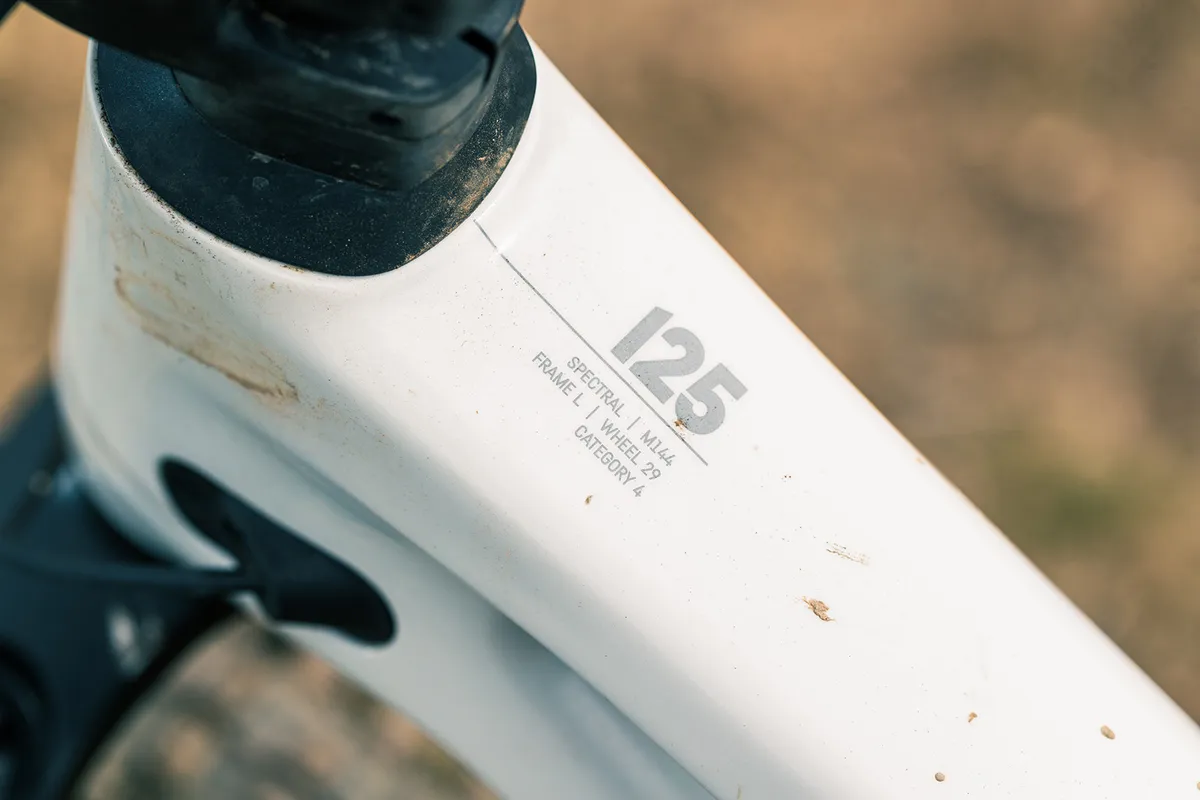
The shape of the Spectral 125 comes straight from the progressive trail bike play-book.
Reaches are long, giving plenty of room in the cockpit and stability on the steeps, while seat tubes are short to allow the saddle to be slammed out of the way, or to allow those looking for extra front-end length to size up from their usual frame size.
The 64.3-degree head angle (measured) pushes the front wheel out in front of the handlebars, while the 76-degree seat angle ensures your hips are well placed over the cranks for comfortable pedalling on steep pitches.
| | S | M | L | XL |
|---|---|---|---|---|
| Seat angle (degrees) | 70.4 | 70.8 | 71.1 | 71.5 |
| Effective Seat angle (degrees) | 76 | 76 | 76 | 76 |
| Head angle (degrees) | 64.1 | 64.1 | 64.1 | 64.1 |
| Chainstay (mm) | 437 | 437 | 437 | 437 |
| Seat tube (mm) | 395 | 420 | 435 | 460 |
| Top tube (mm) | 587 | 611 | 636 | 660 |
| Head tube (mm) | 110 | 120 | 130 | 140 |
| Bottom bracket drop (mm) | 35 | 35 | 35 | 35 |
| Wheelbase (mm) | 1,200 | 1,230 | 1,259 | 1,288 |
| Standover (mm) | 756 | 762 | 763 | 768 |
| Stack (mm) | 613 | 622 | 632 | 641 |
| Reach (mm) | 435 | 460 | 486 | 511 |
Canyon Spectral 125 CF 7 specifications
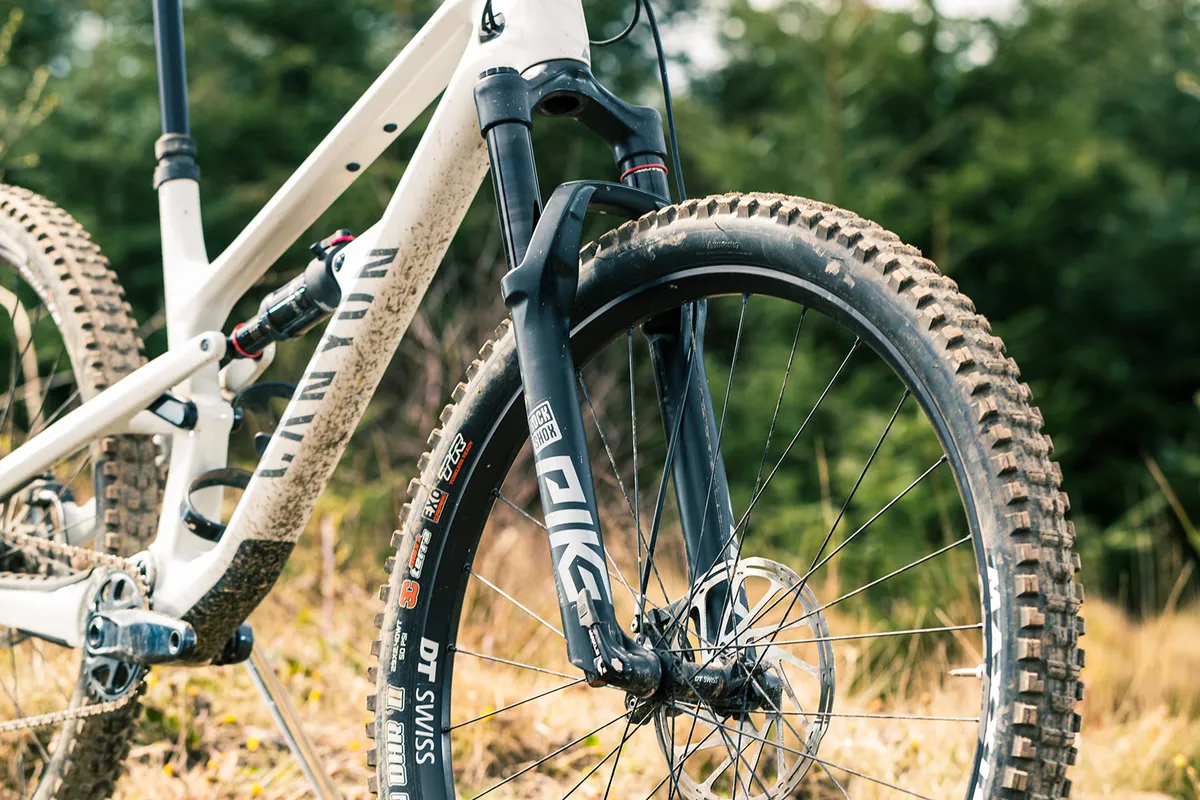
This entry-level carbon model comes equipped top to tail with SRAM’s components. This means you get a Select+ level RockShox Pike fork with 140mm of travel, and a Deluxe Select+ shock at the rear.
A lever gives open and locked modes on the shock, there for efficiency on smooth climbs, while the fork has both low-speed compression and rebound-adjustment dials.
The drivetrain comes from the GX Eagle family, with a 10-52t cassette and a 32t chainring. Finally, SRAM’s Code RS brakes clamp on 200/180mm rotors front and rear.
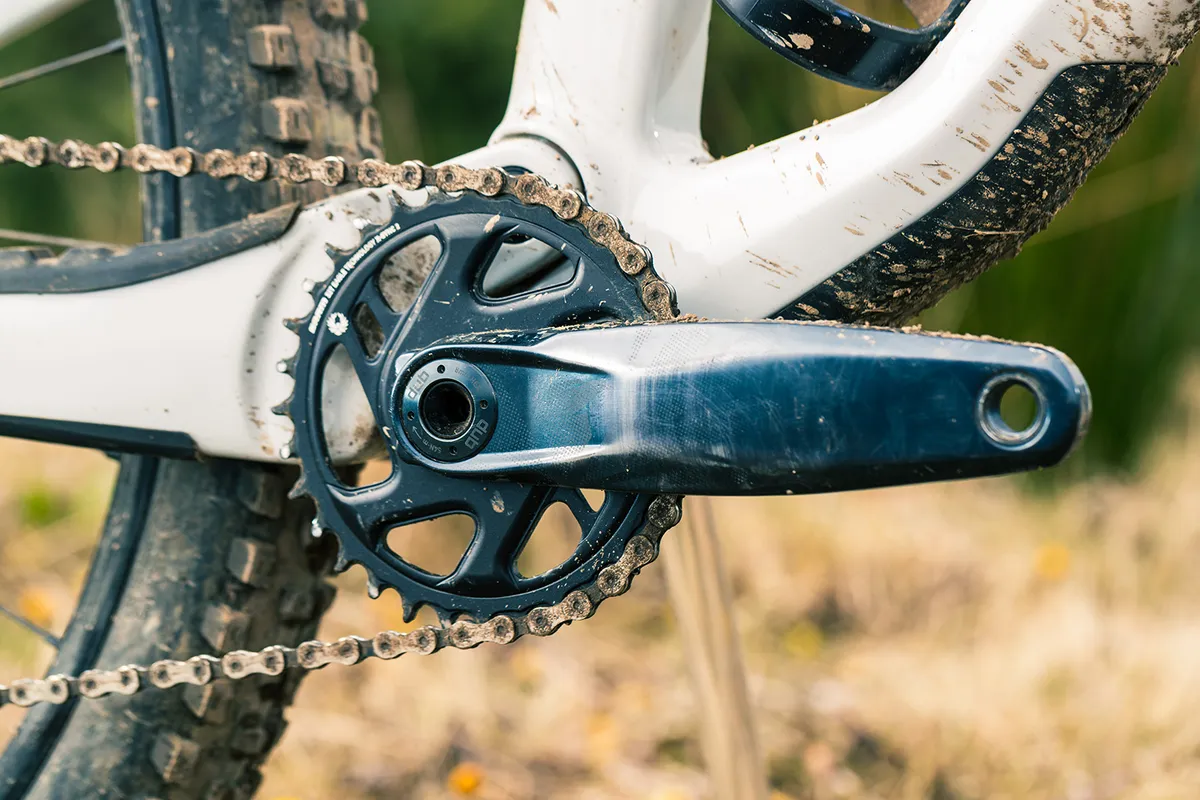
Wheels come from DT Swiss, with its ever-reliable M1900 alloy hoops, shrouded in Maxxis tyres. There’s a Minion DHR II at the front and a faster-rolling Dissector at the rear.
Canyon has an extensive finishing-kit range, with its G5 components finishing the bike. The components are all rated for use in World Cup DH racing, and include a nice top-loading stem and a dropper post that allows 25mm of travel adjustment in 5mm increments.
Travel of the dropper, at its maximum, ranges from 150 to 200mm, frame-size dependent.
Canyon Spectral 125 CF 7 ride impressions

This bike was tested as part of our 2022 Trail Bike of the Year test. It was pitted against seven other bikes, with travel ranging from 120 to 140mm at the rear, and priced from £3,299 to £3,999.99.
The bikes were tested all over the UK, from long, steep tracks in South Wales to regular testing loops in the Forest of Dean, fast rocky tracks in the Tweed Valley and the fresh-cut loam and rocky outcrops of the Cairngorm National Park.
Bikes were tested back to back, with short repeated loops ensuring differences were noticed easily. An extensive programme of workshop weighing, measuring and general poking about ensured that every little detail was explored.
Canyon Spectral 125 CF 7 climbing performance

If you thought the Spectral 125 was meant to be Canyon’s reaction to the downcountry fad, think again, because with this bike Canyon has really set its sights on the aggressive trail market.
As such, climbing performances can’t be compared to short-travel rigs, or even, really, the Trek Top Fuel also featured in Trail Bike of the Year.
The Spectral 125 does climb well. There’s a hint of bob through the pedals, though a flick of the shock’s compression switch will kill that on smooth surfaces, but it’s not as distracting as I found on the Kona Process 134 or Nukeproof Reactor, for example.
The seated position is good, with a steep seat angle, matched with a rangy reach that still ensures there’s plenty of room between the saddle and stem.

On really loose climbs, the suspension isn’t quite as plush as some other bikes, and so the rear tyre can occasionally scrabble for grip where others don’t.
In this regard, while it pedals with more aplomb than its longer-travel ‘normal’ Spectral siblings, I reckon the longer-travel, plusher rigs eke more grip out of the tyres.
If you want to put some efforts in, the chassis is stiff and the wheels aren’t bendy either – this means when you put some watts through the pedals (I’d probably lock the suspension too) the bike reacts well.
At 13.8kg for my large-size test bike, the weight is certainly competitive.
Canyon Spectral 125 CF 7 descending performance
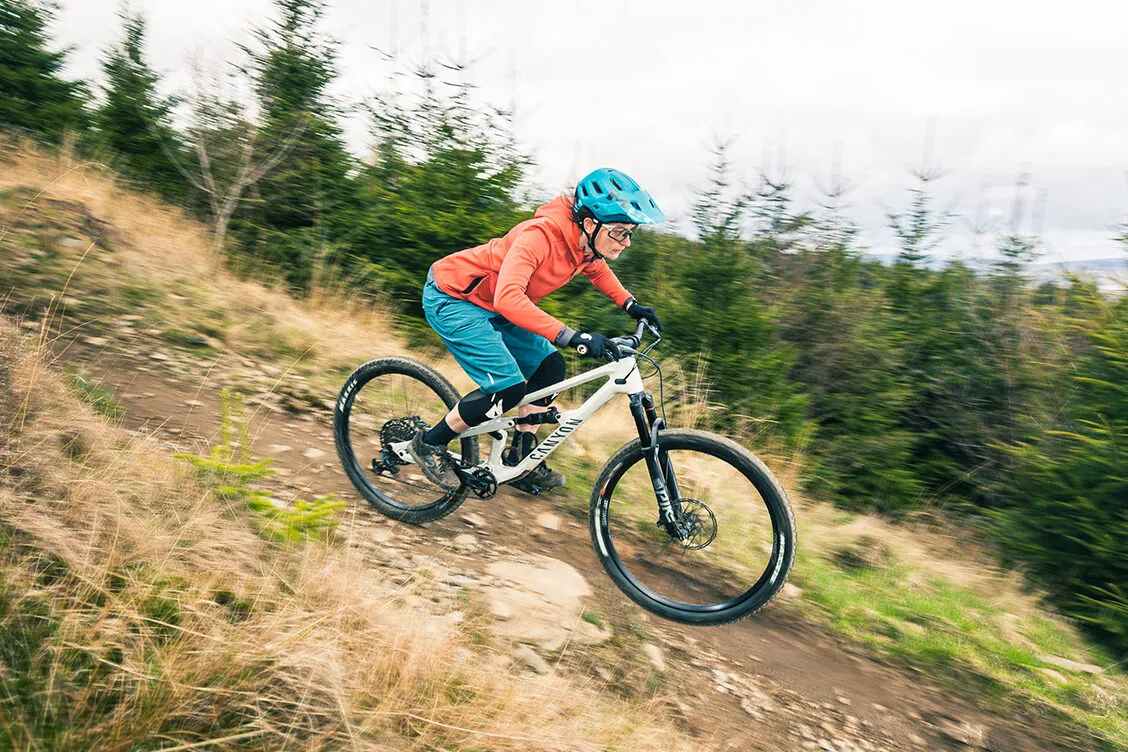
While there are numerous aggressive short-travel bikes out there, the Spectral 125 feels distinct on the trail.
The chassis is stiff, aggressive, low-slung and ready to take a battering. The bike has a pitbull-like stance – it’s squat and ready for a fight.
Setting up the Spectral might be seen as a bit of a riddle, especially if you’re riding mixed terrain. With relatively little suspension travel, getting the shock setup just right is crucial.
Riding with the bike at the recommended 25 per cent sag gives it a really peppy feel, better on the climbs and well suited to bikepark laps, where you want to boost off a lip, or squirt the bike into a berm at full throttle.
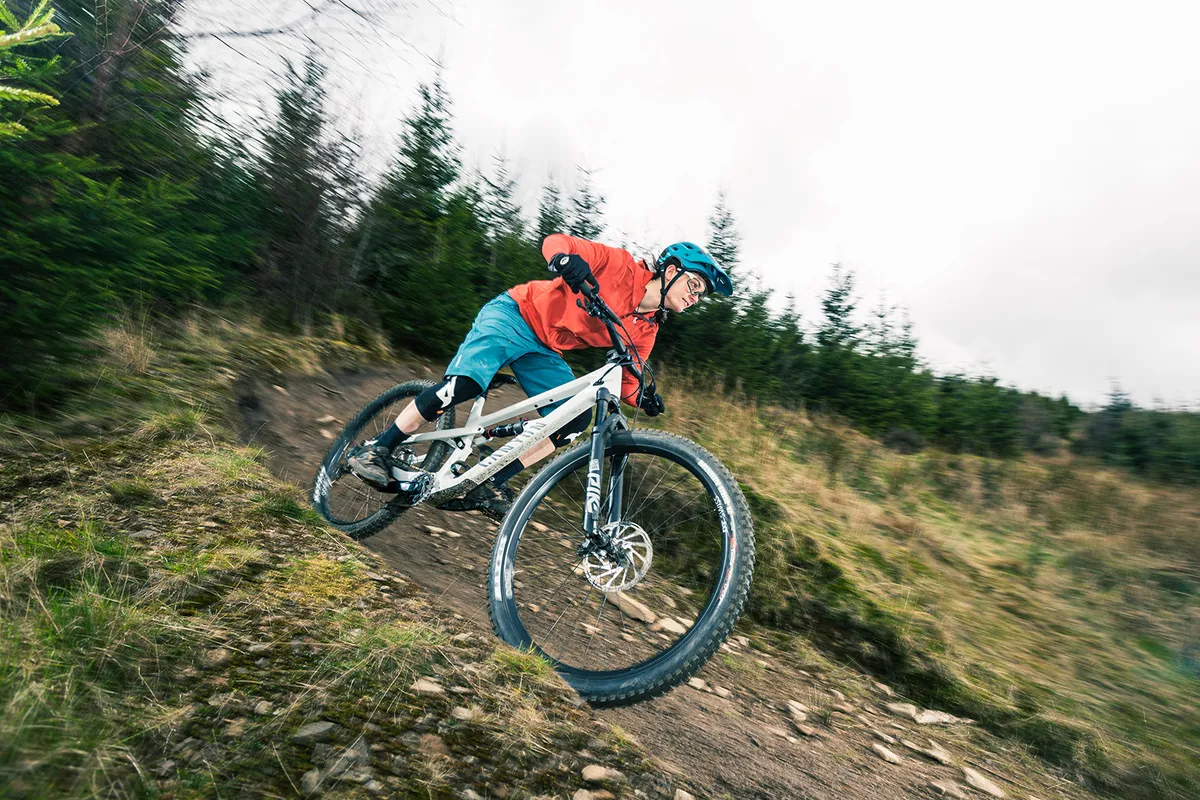
Here, the amount of mid-stroke support is beguiling – the bike sits stoutly in the middle of its travel, with the slack head angle punting the front wheel well out in front of the bars, allowing you to weight the front wheel and push it through a berm at warp speed.
However, as soon as the bike with this setup is fired into a rock garden, it comes unstuck – it’s harsh, especially at the front, and the rear tanks its way through with much less composure than you might want.
Set it up with closer to 30 per cent sag and everything calms down a touch. It takes more effort to pump through rollers, so flatter terrain becomes more of a chore, and with the front wheel so far ahead steering can feel lazy.
However, hit that same rock garden and the bike again starts to make sense. The rear suspension copes better with repeated hits, and the late-stroke progression makes sure you rarely find the deeper reaches of the bike’s travel.
As such, it can require a bit more tinkering to get the best out of the bike. But when you do, it’s an intoxicating ride.
Where the 125 really shines is in super-steep terrain. Here, the fork’s plushness isn’t such an issue.
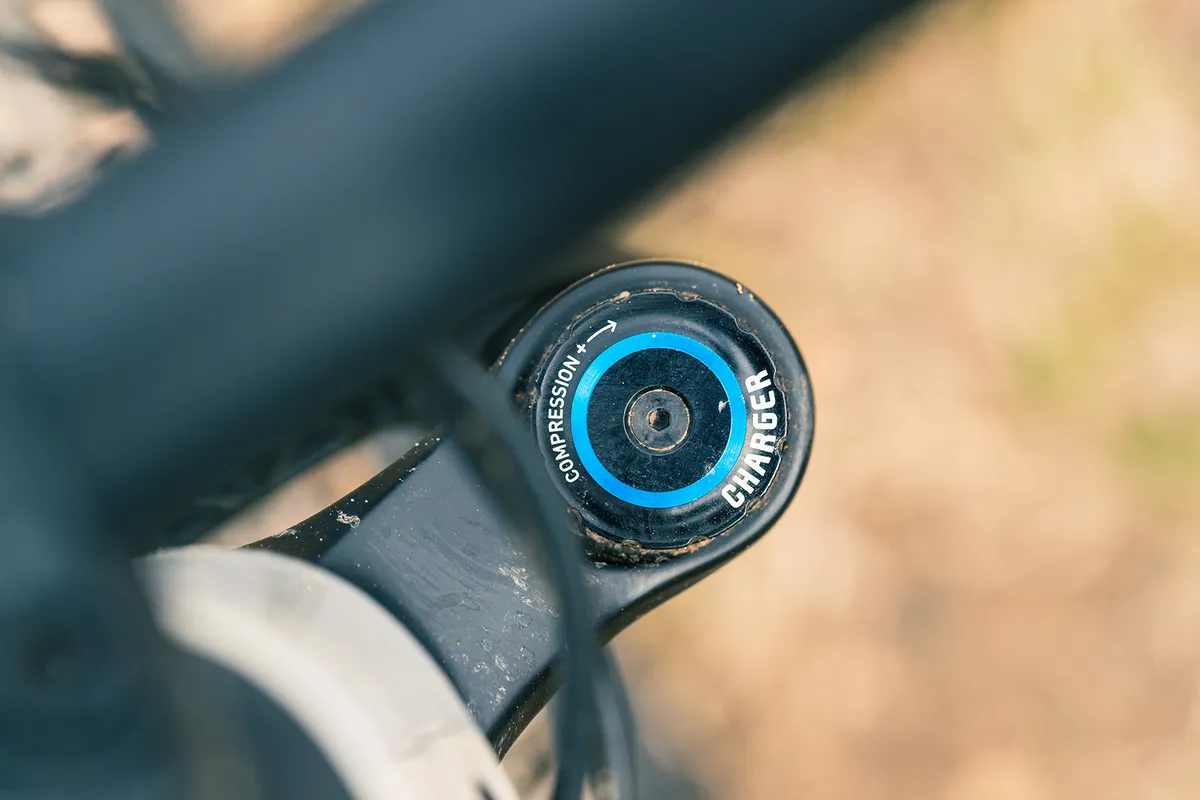
The frame is shaped perfectly to confidently point the front wheel down the nastiest tech you can find, while the short but controlled suspension deals with a catch berm as well as pretty much anything else I’ve ridden.
Swap the tyres for something with more oomph, and I’d put money on this being one of the best bikes at descending super-steep, high-tech trails.
There are some questions to be answered though. The Pike Select+ fork doesn’t feel as good as the Lyrik Select+ or Fox’s GRIP-damped offerings.
The damper in the shock also feels more basic than more expensive versions. As such, combined with a stiff chassis, front-end comfort wasn’t as good as I might have hoped.
The bike is also clearly intended to be ridden hard – and when set up well for the trails, can be ridden so.
Therefore, Canyon’s pick of EXO-casing rubber has to be brought into question. If you ride hard, budget for either some inserts or a stouter pair of tyres to really help you get the best out of the bike.
Despite these two complaints, I still feel the bike represents good value for money.
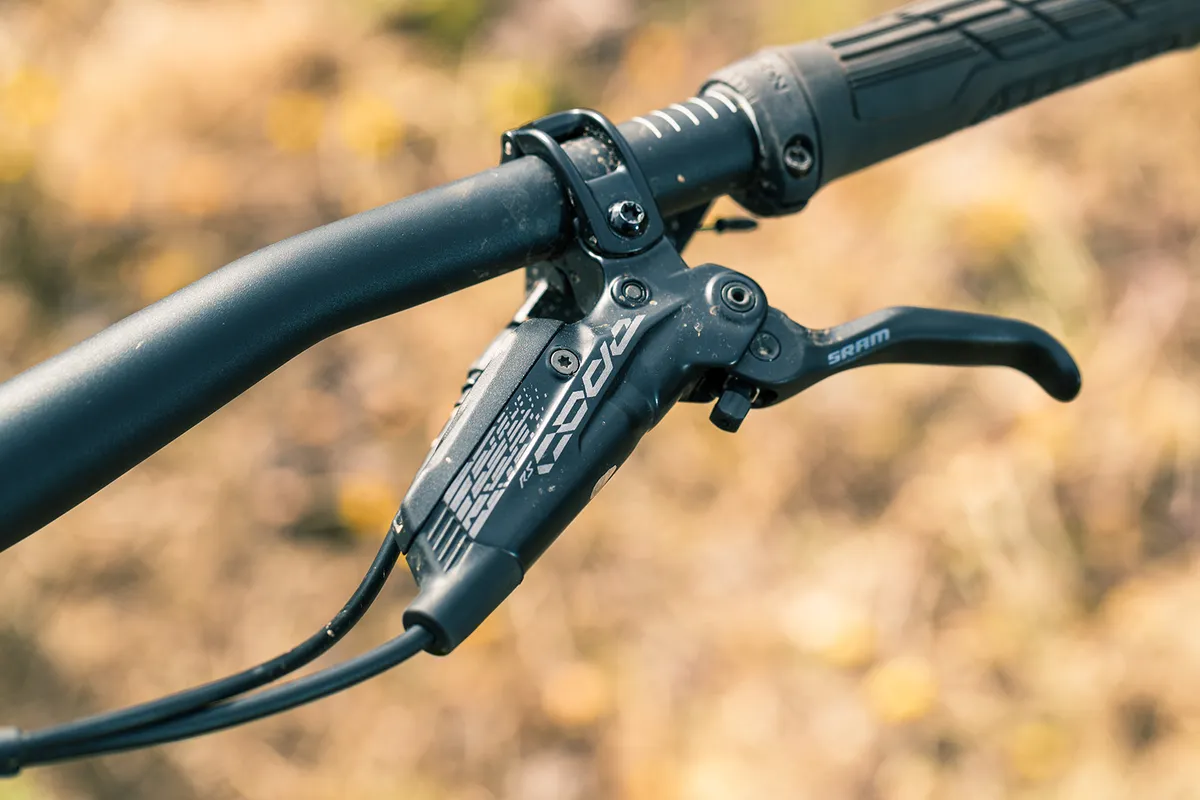
The other sticking point when it comes to the CF 7 version of the Spectral 125 is that the cheaper AL 6 model looks so damn good.
The AL bikes don’t get the geometry flip chip that the carbon models receive – they get the best of both worlds.
This means the low bottom bracket and slack head angle, paired with the steeper seat angle. You might get a bit more weight, but I’d take that.
The AL 6 also gets a Shimano SLX drivetrain and brakes – both of which I’d take over the SRAM GX Eagle and Code RS, and Fox’s suspension – a 36 Rhythm (with the excellent GRIP damper) and piggy-back Float X Performance shock.
How does the Canyon Spectral 125 CF7 compare?

There aren’t many bikes in this category that really compare directly with the Spectral 125 – it’s sort of in a league of its own.
The 120mm-travel Trek Top Fuel 8 is close in terms of frames – both have a great shape and less than 130mm of travel. The Top Fuel is a touch easier to set up to perform on a wider range of trails than the Spectral 125.
However, if you ride hard, the Spectral will give you a touch more back when you reach the ragged edge.
Up front, the personality of the bike matches the likes of the Nukeproof Reactor and Kona Process 134 – both aggressive trail bikes.
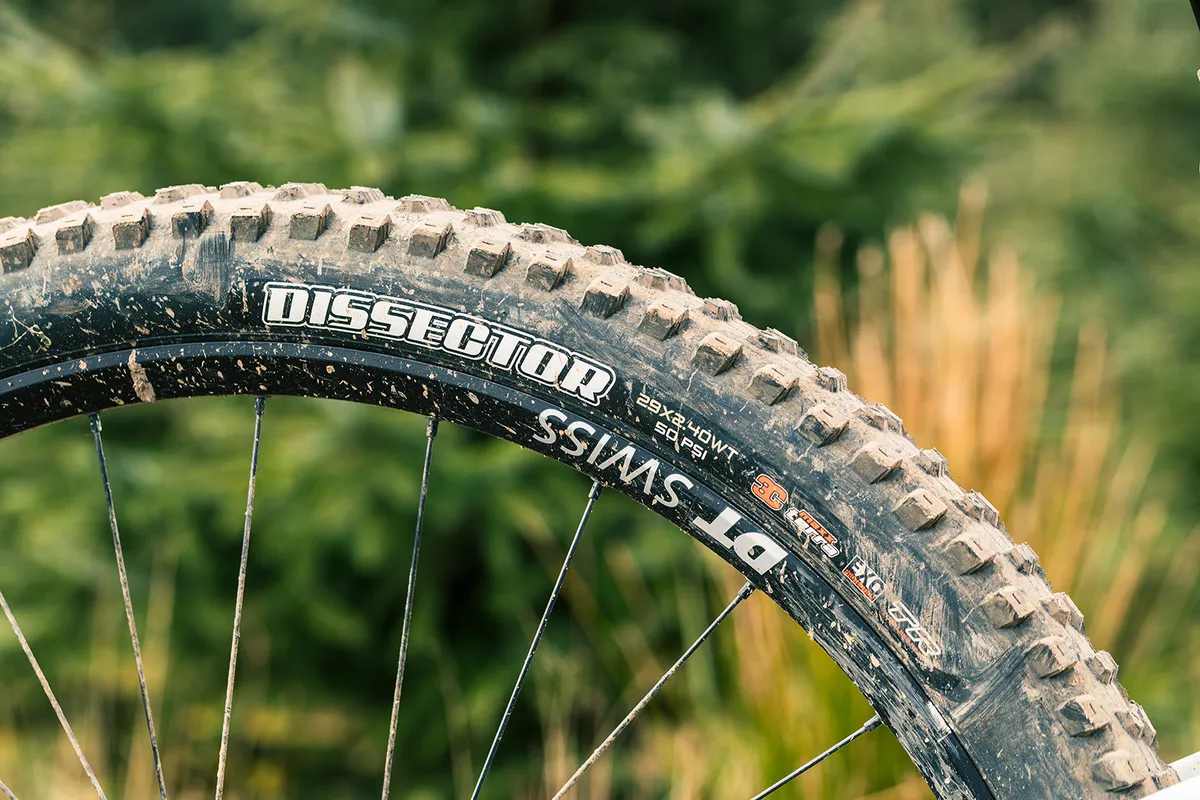
The Spectral climbs better than both, by a decent stretch, but if you want a calm, fast ride, both these bikes’ rear ends deliver, while the Lyrik on the front of the Reactor is a step above the Pike on the other two bikes.
However, it’s hard to compare the Spectral 125 to others. You might also look at the regular Spectral for comparison.
The regular Spectral is an exceptional trail bike, which climbs well, is within half a water bottle’s worth of weight, and has more travel to help when the going gets tough. It doesn’t have that same dogged personality as the Spectral 125, though.
Canyon Spectral 125 CF 7 bottom line
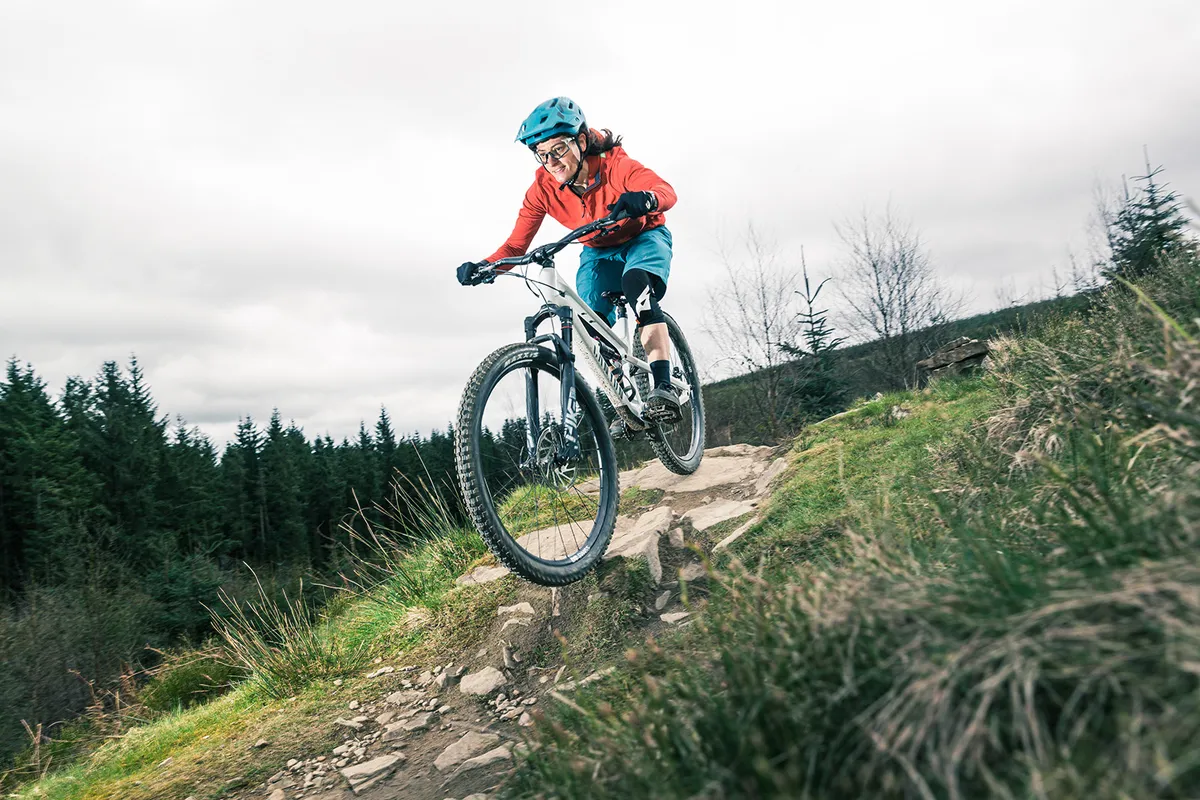
Summing up the Spectral 125 is tough. In many ways, I loved the bike. The short-travel but tenacious personality combine to encourage you to ride the bike way harder than the travel figures suggest you should.
When doing so, you’ll find some shortcomings, especially if you’ve not dialled in that rear suspension perfectly.
However, get the back end working well and you can ride the bike absolutely ragged.
This bike was tested as part of our 2022 Trail Bike of the Year test. We collected eight of the latest trail bikes, from downcountry rigs through to mini-enduro shredders and pitted them back-to-back to find the best.
Also on test:
Product
| Brand | canyon |
| Price | 5349.00 AUD,3499.00 EUR,3349.00 GBP,4199.00 USD |
| Weight | 13.8000, KILOGRAM (L) - without pedals |
Features
| Fork | RockShox Pike Select+, 140mm travel |
| br_stem | Canyon G5 Stem 40mm |
| br_chain | SRAM GX Eagle |
| br_frame | Carbon fibre, 125mm travel |
| Tyres | Maxxis Minion DHRII 3C MaxxTerra EXO 29x2.4WT (f), MAXXIS Dissector EXO 29x2.4WT (r) |
| br_brakes | SRAM Code RS, 200/180mm rotors |
| br_cranks | SRAM X1, 32t |
| br_saddle | Ergon SM10 Enduro Comp |
| br_wheels | DT Swiss M1900 |
| br_headset | Cane Creek 40 |
| br_shifter | SRAM GX Eagle |
| br_cassette | SRAM GX Eagle |
| br_seatpost | G5 Adjustable Dropper Post |
| br_gripsTape | Ergon GE1 EVO |
| br_handlebar | Canyon G5 Riser Bar 780mm |
| br_rearShock | RockShox Deluxe Select+ |
| br_bottomBracket | SRAM DUB |
| br_availableSizes | S, M, L, XL |
| br_rearDerailleur | SRAM GX Eagle |
